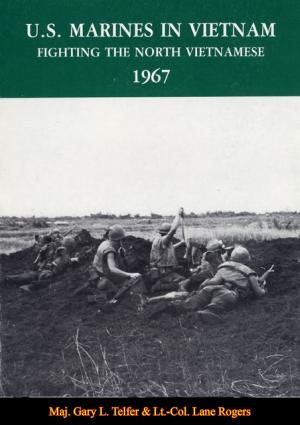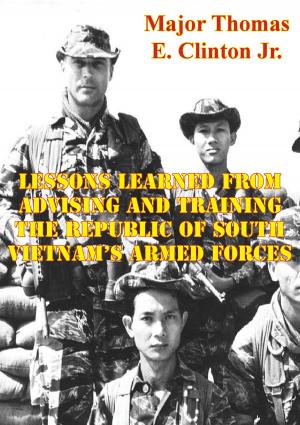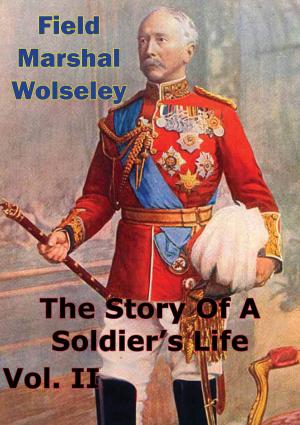How The North Vietnamese Won The War: Operational Art Bends But Does Not Break In Response To Asymmetry
Nonfiction, History, Military, Vietnam War, Asian, United States| Author: | Major Dale S. Ringler | ISBN: | 9781786252852 |
| Publisher: | Normanby Press | Publication: | November 6, 2015 |
| Imprint: | Normanby Press | Language: | English |
| Author: | Major Dale S. Ringler |
| ISBN: | 9781786252852 |
| Publisher: | Normanby Press |
| Publication: | November 6, 2015 |
| Imprint: | Normanby Press |
| Language: | English |
This monograph analyzes the effectiveness of operational campaign design against an asymmetrical threat during the 1968 Tet Offensive. The focus is on conceptual elements of campaign design that are derived from theory, which incorporate the particulars of military history to the general truth of warfare. Effective campaign execution is dependent, in part, on effective campaign design that set of theoretical and doctrinal precepts that define the concerns of the operational planner. The monograph identifies lessons learned from this period that are applicable to current U.S. Joint and Army doctrine as well as lessons for planners and executors of U.S. military action under the American system of civilian control of the military.
First, the monograph demonstrated the complex nature of asymmetric warfare. Finding and creating vulnerabilities and attacking those vulnerabilities with inherent strengths is the key to asymmetric warfare. Secondly, the monograph discussed the elements of campaign design that are derived from theory, which incorporate the particulars of military history to the general truth of warfare. Some of the more common conceptual actions are to understand the type and scope of conflict, define the enemy and friendly center of gravity, identify possible culminating points, select lines of operation, determine decisive points, and understanding the dangers of paralysis commonly known as cyber shock. The third section identifies the strategy and identifies particular military objectives identified by the North Vietnamese.
This monograph analyzes the effectiveness of operational campaign design against an asymmetrical threat during the 1968 Tet Offensive. The focus is on conceptual elements of campaign design that are derived from theory, which incorporate the particulars of military history to the general truth of warfare. Effective campaign execution is dependent, in part, on effective campaign design that set of theoretical and doctrinal precepts that define the concerns of the operational planner. The monograph identifies lessons learned from this period that are applicable to current U.S. Joint and Army doctrine as well as lessons for planners and executors of U.S. military action under the American system of civilian control of the military.
First, the monograph demonstrated the complex nature of asymmetric warfare. Finding and creating vulnerabilities and attacking those vulnerabilities with inherent strengths is the key to asymmetric warfare. Secondly, the monograph discussed the elements of campaign design that are derived from theory, which incorporate the particulars of military history to the general truth of warfare. Some of the more common conceptual actions are to understand the type and scope of conflict, define the enemy and friendly center of gravity, identify possible culminating points, select lines of operation, determine decisive points, and understanding the dangers of paralysis commonly known as cyber shock. The third section identifies the strategy and identifies particular military objectives identified by the North Vietnamese.




![Cover of the book Thiet Gap! The Battle Of An Loc, April 1972. [Illustrated Edition] by Major Dale S. Ringler](https://www.kuoky.com/images/2014/august/300x300/9781782893844-YLYK_300x.jpg)



![Cover of the book Daily Life During The Indian Mutiny: Personal Experiences Of 1857 [Illustrated Edition] by Major Dale S. Ringler](https://www.kuoky.com/images/2015/november/300x300/9781786253675-gQvt_300x.jpg)





![Cover of the book The Invasion of the Crimea: Vol. VIII [Sixth Edition] by Major Dale S. Ringler](https://www.kuoky.com/images/2017/january/300x300/9781787203501-Uugu_300x.jpg)
![Cover of the book Vietnam Studies - Command and Control 1950-1969 [Illustrated Edition] by Major Dale S. Ringler](https://www.kuoky.com/images/2014/august/300x300/9781782893677-krRu_300x.jpg)